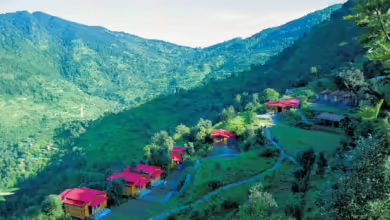A tale of courage, self-control, and selflessness
Twenty-five years have elapsed since Pakistan attempted to breach the Line of Control (LoC) in order to exact revenge for the many losses it suffered at the hands of the Indian military. Pakistan made another attempt to restore its honor after its devastating loss in 1971 that resulted in the dissolution of that nation and our takeover of the Siachen Glacier in 1984.

The battle in Kargil was fought in May and July of 1999. Pakistan’s “a thousand cuts” policy against India in the late 1990s was not having the expected effect. In the Kashmir valley, things had become more stable. In order for the Central administration to conduct elections in Jammu and Kashmir in 1996 and install an elected administration, the Army had successfully brought the insurgency under reasonable control.
In this context, Pakistan began its operations by crossing a frontage of about 130 km and entering the Mushkoh-Drass-Kargil-Batalik sectors, which are places where both sides had customarily evacuated their positions in the winter and reoccupied them when the snow melted. Pakistan’s military goal was to isolate Ladakh and seize as much land as possible with the intention of shifting the LoC’s alignment, while its political goal was to resurrect the Kashmir dispute on the international scene.
It was an honor and a joy for me to be in charge of the 8 Mountain Division when fighting broke out in the Drass-Mushkoh area and in the valley. A local grazier informed the unit in Batalik in early May of suspicious movement in the region, which may not have gotten the attention it required.
The enemy had penetrated many locations, as the local formation’s patrols eventually revealed. However, the identity of the intruders remained unclear, and it was clear that the unnoticed incursions were the result of a breakdown in information. But Pakistan was caught off guard by the Army’s fury and quickness of response, which interfered with its preparations to consolidate the first successes.
On June 1st, I received an order to take over operational responsibility for the Drass-Mushkoh region and started organizing our first offensive right away. The battalions were given time to conduct advanced phases of acclimatization, a reconnaissance of their designated targets, and to refocus their combat exercises and procedures from counter-insurgency operations to conventional warfare while they were being recruited from the Valley.
Concurrently, the artillery, both main and auxiliary, was being enlisted and making ready for its gun placements and ammo dumps. After evaluating our speed of preparation and build-up, I made the decision to use 2 Rajputana Rifles, two companies of 18 Grenadiers as the solid basis, and the rest of the battalion as a reserve to launch the initial assault on Tololing on the evening of June 12/13.
The topography that strategically favors the defense and severely disadvantages the attacker as one traverses Zoji La is breathtaking. Military activities need high levels of physical fitness, appropriate acclimatization, and clothes to withstand very low temperatures. When an assault is well-planned, the approaches are difficult, constrained, and steep, which increases the likelihood of significant deaths among the attacking forces. The assault has a sluggish pace, and the soldiers and equipment suffer more damage due to the rarefied environment and high altitude.
The restriction of mobility along the one main road axis also leads to a number of logistical and tactical issues. Any operational plan must take into account a number of important factors, including the addition of soldiers as reserves or reinforcements, the availability of restricted regions for the movement and placement of weaponry, and logistical limitations.
It was the division’s first coordinated assault, so things were quite tense when, as planned, 2 Rajputana Rifles launched their attack at 8:30 p.m. with heavy artillery support. The assault went well, and by first light we had most of Tololing, with the exception of the summit, which was holding out. To our tremendous delight, the remaining forces were swept in a daylight attack by the fearless commander, Col. MB Ravindranath, who had identified a hole in the enemy’s defenses. After our triumph at Tololing, we successfully embarked on a “ridge-hopping” campaign to restore the integrity of the LoC, the honor and dignity of the Army, and the nation. This marked the beginning of the fight of the ridges. With the full backing of communications and logistics, artillery and combat engineers effectively launched each unit. Every single one of them succeeded in completing their assignment.
The Kargil War was a tale of valor, unadulterated bravery, self-control, and sacrifice made by young men and officers—many of them gave their lives in order for us to live honorably and with dignity. Although the bravery exhibited by Param Vir Chakra recipients Capt. Vikram Batra, Capt. Manoj Pandey, Grenadier (later Honorary Captain) Yogendra Singh Yadav, and Rifleman (later Subedar Major) Sanjay Kumar is legendary, there are countless untold tales of young officers’ and men’s bravery in delivering victory to the nation.
We suffered a great deal of casualties—559 guys were lost throughout the operations. We honor and commemorate these courageous men and women for their sacrifice on this 25th anniversary of the conflict. We also have to acknowledge the sacrifices made by the Veer Naris, many of whom lost their spouses just a few days after being married, in order to live honorable lives and raise their kids to be deserving members of the community.







